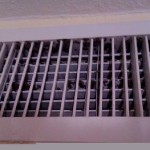Mold and mildew aren’t just ugly; they present several risks to you and your home. Left untreated, these fungi can cause structural damage and even cause severe damage to your health and the health of your loved ones.
While both mold and mildew share many common traits, each poses its own risks and can require a specific type of treatment. Understanding some of the differences between the two is the best way to develop a strategy to keep your household safe from fungal threats.
The Big Difference Between Mold and Mildew
Both types of fungi are very closely related. For example, they like to sprout in similar places and both give off a foul smell, but how they develop and grow is a crucial difference between them, as well as the danger they pose to you.
On the one hand, mold grows in black or green patches that penetrate beneath the surface of the affected material, while mildew instead grows flat on the surface without penetrating the surface, making it much easier to remove.
Mildew also presents a much lesser risk of damage to your health as well, and more of a threat to plants and crops. Of the many types of mold that can exist inside your house, some are extremely toxic to people and animals.
While both fungi can thrive in the same types of warm, damp environments, you will more often find mold growing inside permanent structures like walls and flooring while mildew usually grows on smaller surfaces like paper and fabric.
Is it Mold or Mildew?
Our experts know how to deal with all types of household funguses, but you can try telling the difference between mold and mildew by yourself. While each can appear anywhere from unsightly to grotesque, there are some key differences in their overall appearances.
Mildew most often grows in a flat pattern and appears in either of two forms: powdery or fluffy. You can identify it by its lighter appearance which is either white, gray, or orange. However, mildew can turn black or brown over time.
In contrast, mold usually appears fuzzy, hairy, or slimy, and often grows more irregularly than mildew. While it can rarely look white and gray, most molds are usually a darker color or have multiple colors, such as blue, green, yellow, brown, and black. Wooden surfaces covered in the mold will often begin to rot.
Common Types of Mold
There are over 10,000 types of mold that we know of that can grow indoors and threaten your home. However, there are five of these types that we find are by far most common, and we are highly equipped to treat them.
Alternaria is a mold commonly found in buildings that have suffered water damage.





